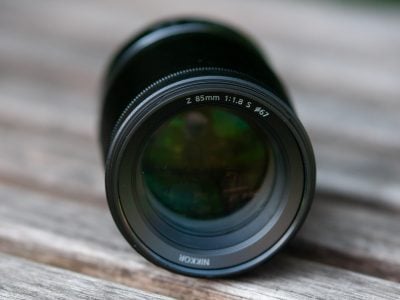Nikon Z 85mm f1.8 S review
-
-
Written by Thomas
Intro
The Nikon Z 85mm f1.8 S is a short telephoto lens designed for Nikon’s full-frame Z mirrorless system. Announced in July 2019, Nikon’s sixth Z Nikkor becomes the first native prime lens in the system aimed at portrait photographers who desire classic head-and-shoulders compositions with very shallow depth-of-field effects thanks to its f1.8 focal ratio. But with Nikon’s FTZ adapter existing F-mount lenses can easily be used on their Z bodies. So the new Z 85mm f1.8 S faces competition from a host of other 85mm lenses with the F-mount.
As the Z 85mm f1.8 S is a member of Nikon’s high-end “S” line it is expected to perform on a very high level. To find out whether the new Nikon Z 85mm f1.8 S rightfully carries the “S” moniker I tested its optical qualities on the 45MP Z7 body against a few other lenses of which the Zeiss Otus 85mm f1.4 is my current reference lens. So if you’re interested in how Nikon’s third prime lens for their mirrorless Z system performs, you’ve come to the right place! PS – if you’re interested in the other Z lenses in Nikon’s line-up check out our in-depth reviews: Nikon Z 14-30mm f4.0 S review / Nikon Z 24-70mm f2.8 S review / Nikon Z 24-70mm f4 S review / Nikon Z 35mm f1.8 S review / Nikon Z 50mm f1.8 S review.
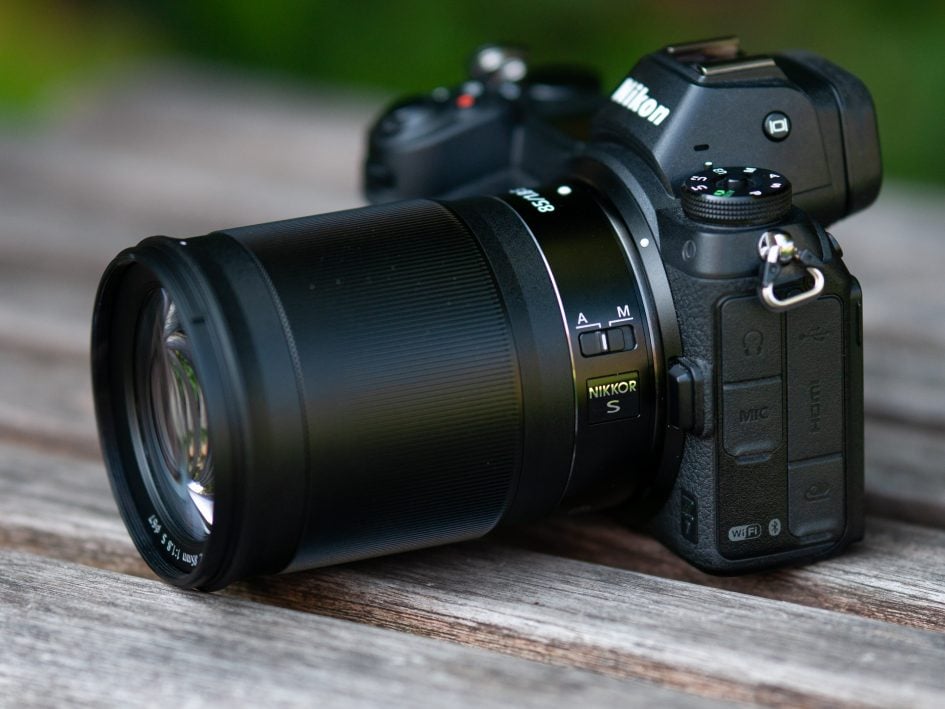
Facts from the catalog
As usual I’ll have a look at the technical data of the new Nikon Z 85mm f1.8 S first. I’ve rated the features with a [+] (or [++]), when it’s better than average or even state of the art, a [0] if it’s standard or just average, and [-] if there’s a disadvantage. For this comparison I use the Nikon AF-S 85mm f1.8G (“F Nikkor” for short) and the Sigma 85mm f1.4 Art (“Sigma Art” for short).
Size (diameter x length): 75 x 99mm (3.0 x 3.9in.). The lens hood adds 50mm and is 87mm in diameter. The F Nikkor is 80 x 73mm + 41mm lens hood and the Sigma Art is 95 x 123mm + 53mm lens hood. For an apples-to-apples comparison one has to allow for the differences of flange distance between the Z-mount (16mm) and the F-mount (46.5mm). So these 30.5mm (1.2in.) have to be added when using the F Nikkor or the Sigma Art – via the FTZ adapter on a Nikon Z body. That brings the F Nikkor to a total length (incl. lens hood) of 145mm (5.7in.) and the Sigma Art to 207mm (8.1in.). [0]
Weight: 467g (16.6 oz.) plus 35g for the lens hood. The F Nikkor is only 346g (12.3 oz.) + 41g lens hood, the Sigma Art 1113g (39.3 oz.) + 51g lens hood. Add another 133g (4.7 oz.) for the FTZ adapter to use them on a Z7. [+]
Optics: 12 elements (including 2 special dispersion) in 8 groups. The absence of aspherical elements bodes well for the Bokeh: it should not be plagued by onion rings. The most complex design has the Sigma Art with 14/12 elements/groups, the F Nikkor is only 9/9. The new Nikon Z 85mm f1.8 S uses Nikon’s Nano-Coating to reduce flare, glare and ghosting. [+]
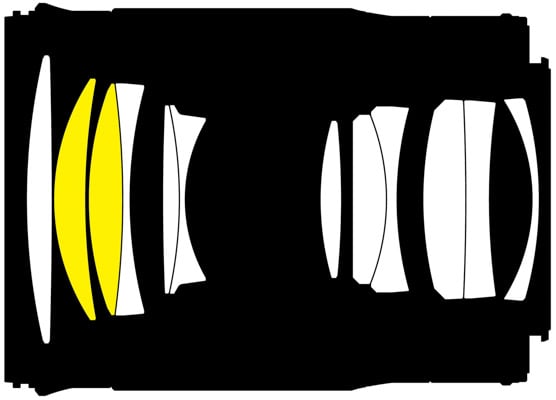
Closest focus distance in manual focus is 0.76m (2.5ft.) with a magnification of 1:7.2. The magnification of the new Nikon is a bit disappointing but comparable to other 85mm lenses. A magnification of 1:10 is achieved at 0.99m. [0]
Filter-thread: 67mm, same as the F Nikkor. Unfortunately Nikon uses 62mm filters on their Z 50mm f1.8 S, a lens which has practically the same width as the Z 85mm f1.8 S. So if you use both you need two sets of filters. The Sigma Art needs huge 86mm filters. [+]
Image stabilization: The lens offers no optical stabilization. But the Nikon Z bodies provide built-in sensor-shift stabilization over 5 axis – plus an optional electronic stabilization in video mode. The F Nikkor and the Sigma Art also have no optical image stabilization built in but the body-based image stabilization of a Nikon Z body provides roll, pitch, and yaw correction when used on the FTZ adapter. [0]
Auto focus: Yes with built-in AF drive. Manual-focus override is by simply turning the focus ring – if you didn’t assign another operation to this multi-function ring. The focus ring has a variable gearing that allows for very precise manual focus when turned slowly. Unfortunately this feature cannot be switched to linear gearing which makes smooth focus pulling for videographers almost impossible. Focus on the F Nikkor and the Sigma Art works similarly with the only differences being a linear gearing with 95 degrees of throw on the F Nikkor and 130 degrees on the Sigma Art – and that the focus ring does only that: focusing. As typical DLSR designs the F Nikkor and Sigma Art also sport a distance scale with dof markings which the new Z Nikkor does not offer (like most lenses designed for mirrorless bodies). [+]
Covers full frame/FX or smaller. Same with the alternatives. [+]
Price: The lens has a list price of 900 EUR (incl. 19% VAT) / 800 USD. The F Nikkor goes for about 460 EUR / 430 USD while the Sigma Art has an asking price of 975 EUR / 1200 USD. [0]
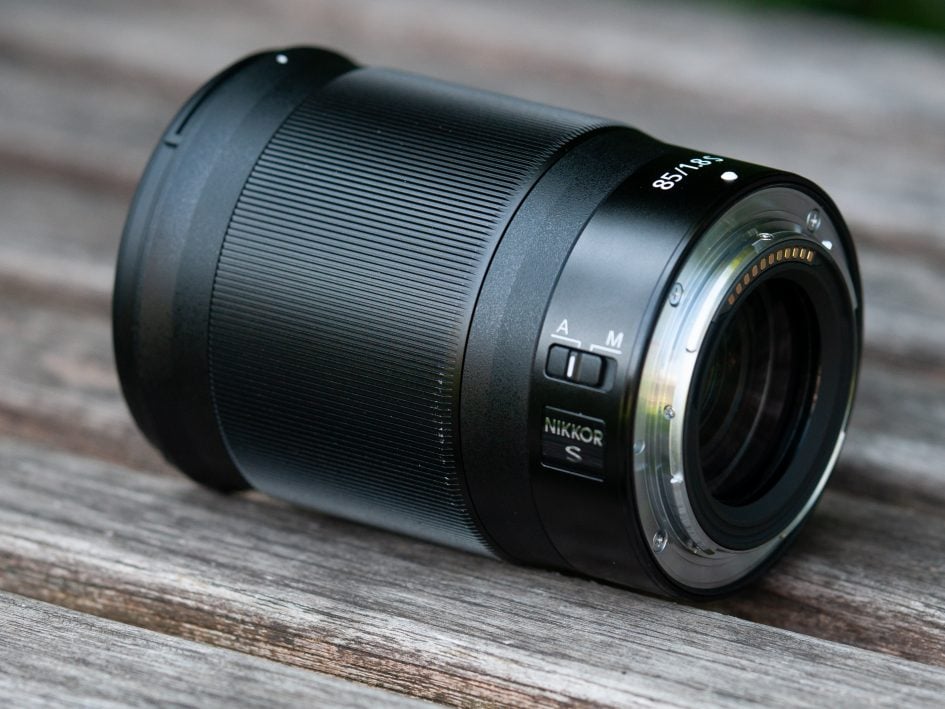
Comes with a soft pouch and the lens hood is included, reversible for transport. That’s similar to the F Nikkor but I must say the new pouches for the Z lenses so far are disappointing: the material is flimsy and the pouch has no strings to pull it close. So if you put the lens in your bag it might easily slip out of its pouch and bang around unprotected. The Sigma Art comes with a nicely padded lens case and strap. [0]
Aperture ring: the multi-function control ring of an S-lens can be assigned to operate the aperture, exposure compensation or focus. It automatically falls back to its customary focus control when the lens is switched to manual focus. Although the lens control ring has not the same benefit as having a focus ring plus a dedicated aperture ring on the lens it gives you more flexibility to control one of the more important shooting parameters directly from a nice ring on the lens. The F Nikkor and most other alternatives don’t have an aperture control ring. [+]
Sealing: yes, a rubber grommet at the lens-mount plus further special weather-sealing throughout the construction. The F Nikkor and Sigma Art only have a sealing at the lens-mount. [+]
The score in the “features-department” is 0[-]/5[0]/7[+], so the lens has a good feature set. It offers the nifty multi-purpose control ring and is sealed against the weather like Nikon’s pro lenses. Compared to the other Z lenses so far it only lacks a bit in close-up shooting.
Three 85mm lenses for Nikon
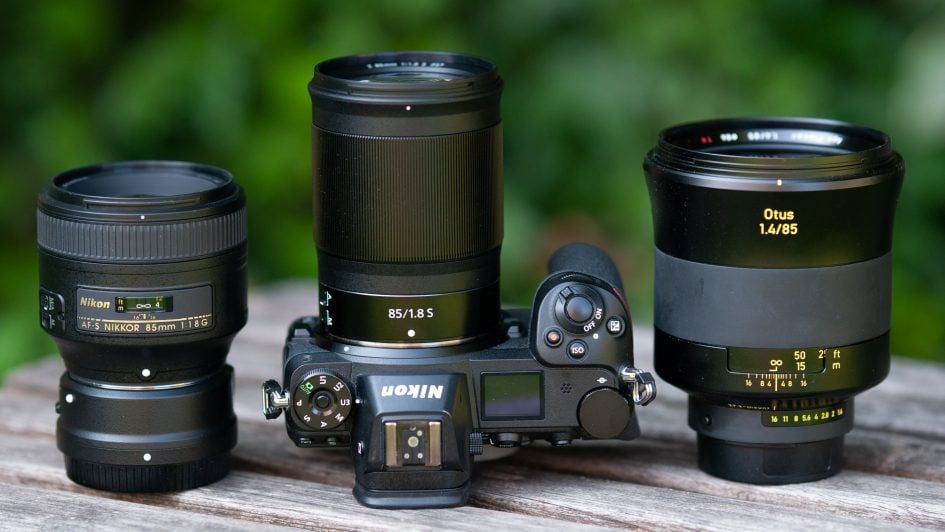
Above from left to right: Nikon 85mm f1.8G on Nikon FTZ adapter, Nikon Z 85mm f1.8 S, Zeiss Otus 85mm f1.4 (needs adapter)
Alternatives
Large aperture 85mm lenses are sort of everybody’s darling: they allow for good background isolation on APS-C/DX and FF/FX cameras alike and produce nice Bokeh. They are good for portraiture but can also be used for other types of photography as well. So it’s no wonder that every lens manufacturer offers at least one lens in this category and Samyang even has one manual-focus lens for Nikon’s Z-mount. The other alternatives can be used mounted on Nikon’s FTZ adapter – adding another 31mm in length and 133g in weight:
Let’s begin with 85mm lenses with f1.8 aperture. They do collect 2/3EV less light and produce slightly smaller circles of confusion but as a general rule they are smaller, lighter, and cheaper than their f1.4 brethren:
- Nikon has the AF-S 85mm f1.8G for 460 EUR / 430 USD. It got a Highly Recommended in my Nikon 85mm f1.8G review from 2012. I repeated all the testshots on the Nikon Z7 (plus FTZ adapter) for my comparisons here with the Nikon Z 85mm f1.8 S.
- There’s the Tamron SP 85mm f1.8 VC (690 EUR / 750 USD) which earned a Highly Recommended in my Tamron 85mm f1.8 VC review from 2016. It offers image stabilization of its own which was good for 2 stops in my tests. Tamron has also published a firmware update to use the F-mount lens via FTZ adapter. If you already own the lens send it in to Tamron service or use their USB dock to apply the update to your lens.
Following are some 85mm f1.4 lenses for F-mount on offer:
- Sigma’s 85mm f1.4 Art lens earned a Highly Recommended in my Sigma 85mm f1.4 Art review from 2017. It costs about 975 EUR / 1200 USD. It’s a huge and heavy lens at 95 x 126mm and 1.13kg.
- Nikon offers the AF-S Nikkor 85mm f1.4G from 2010 at 1460 EUR / 1230 USD. See my Nikon 85mm f1.4G review from 2013.
- If you can work with manual focus there are two major alternatives to consider: The new Samyang/Rokinon/Walimex MF 85mm f1.4 Z for around 380 EUR/USD is the absolute cheapest way to get a 85mm f1.4 lens. But although it does not need the FTZ adapter its optical design is still for DSLRs. And then there is the Zeiss 85mm f1.4 Otus which earned a Highly Recommended for its benchmark image quality and tank-like build-quality in my Zeiss Otus 85mm f1.4 review from 2014 but also costs around 3700 EUR / 4000 USD and is even bigger than the Sigma Art.
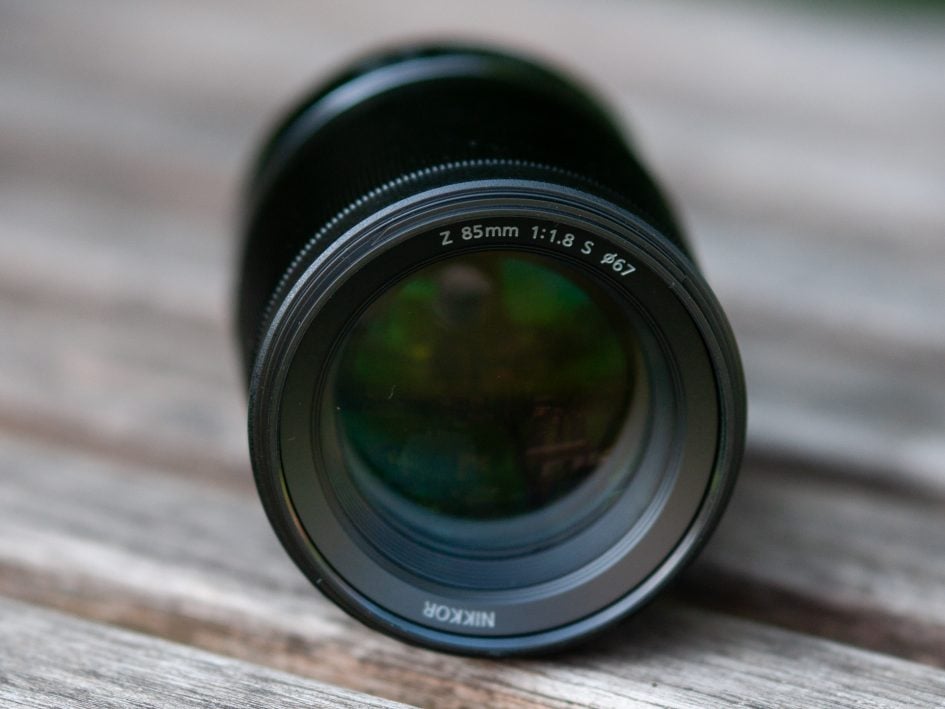
Focus
Focus accuracy and repeatability is critical to consistently produce sharp shots especially with large aperture lenses. Repeatability (the accuracy of focus on the same subject after repeated focus-acquisition) of this lens is very good (measured 98.5% in Reikan FoCal) with no outliers over a series of 40 shots. There is very little focus variation whether the lens focuses from a closer distance or from infinity. The Nikon 85mm f1.8G in comparison consistently produced mediocre results when coming from infinity but good results when focusing from a closer distance. Overall consistency of focus was measured only 93.7% for the F Nikkor. A little micro AF adjustment could probably have helped but time was too short for testing this.
The new Z Nikkor focuses in around 0.7 sec from infinity to 0.99m (1:10 magnification), which is pretty fast – the Nikon 85mm f1.8G is equally fast (tested via FTZ adapter on the Nikon Z7). Hunting didn’t occur under the well-lit test conditions. The focus/control ring is 47mm wide. Its surface is not rubberized but as it moves super smooth and can easily be operated with one finger the finely knurled metal surface is well up to its task.
AF-operation of the new lens is barely audible from the outside. If you record video with the built-in microphone the AF-drive produces a slight whir. This lens is clearly not as quiet as the Nikon Z 24-70mm f4S. If you use the control ring on the lens to change the aperture this works smoothly and without noise.
As you pull-focus, you’ll notice very visible focus breathing: when I adjusted the focus from infinity to 0.99m on the new Nikkor lens, I measured a 13% increase in magnification. This is pretty disappointing for videographers.
Image stabilization
To test the effectiveness of the image stabilization with the Nikon Z 85mm f1.8 S on a Z7 body, I did a series of 120 test-shots hand-held. I tested with shutter speeds from 1/80 of a second down to 0.2 sec. I used the shots at 1/80 sec with VR=OFF as reference of how good my hand-holding was at the time of the test and Reikan FoCal did the chore of evaluating the sharpness of all shots.
Here’s the results: With VR=ON the combo produced results down to 1/20 sec (2 stops) which were clearly more consistently sharp than at 1/80 sec with VR=off. At 1/10 sec (3 stops) I had 2 outliers (out of 20 shots) that were worse than the results at 1/80 with VR=off but 90% of the shots were clearly better. At 1/5 sec (4 stops) results become quite erratic with 25% clearly blurred images and another 25% unsatisfyingly soft. This is a solid 3 stop advantage from stabilization – one stop more than the only stabilized alternative from Tamron offers.
Next check out my quality results!
Check prices on the Nikon Z 85mm f1.8 S at B&H, Adorama or WEX. Alternatively get yourself a copy of my In Camera book or treat me to a coffee! Thanks!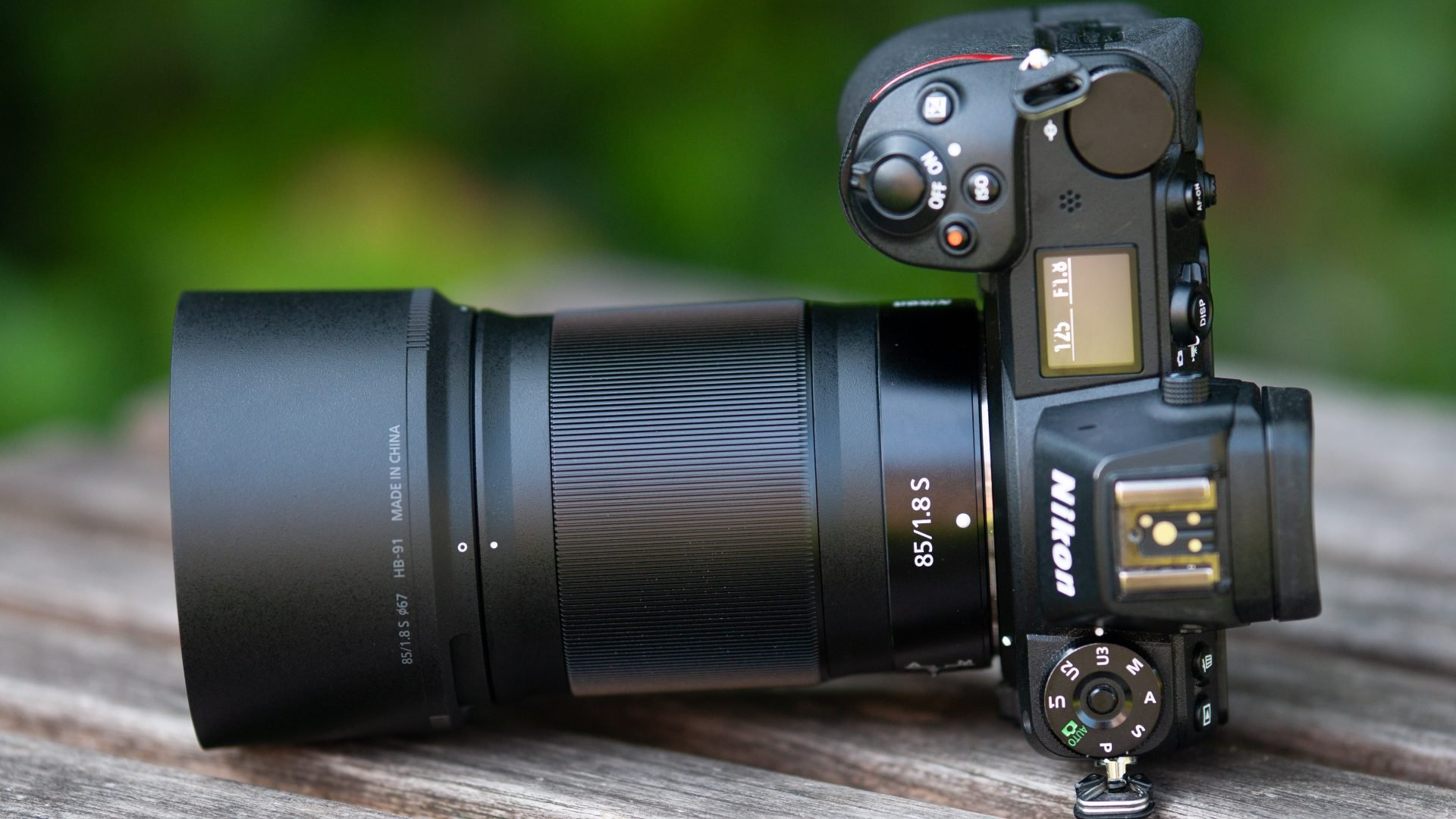
 Nikon's first 85mm prime lens for their full-frame mirrorless Z cameras performs very well with regard to contrast, resolution, Bokeh, focus reliability, color aberrations, and coma. It produces sharp and contrasty images that are an excellent fit for the 45MP Z7 sensor. Plus it is hardened well against the elements and its focus ring can be assigned different tasks like exposure compensation or aperture setting. On the downside the extreme corners are a bit soft at infinity and stay so unless you stop down by a fair amount. Its magnification in close-up situations of 1:7.2 is not as good as Nikon's other Z lenses so far, I wish the barrel could have been a bit shorter, plus the lens pouch is flimsy - although these are all minor issues. As most modern F-mount lenses work well on a Z body via the FTZ adapter, Nikon's new lens is also not without alternatives. But its overall performance justifies the price and deserves a Highly Recommended!
Nikon's first 85mm prime lens for their full-frame mirrorless Z cameras performs very well with regard to contrast, resolution, Bokeh, focus reliability, color aberrations, and coma. It produces sharp and contrasty images that are an excellent fit for the 45MP Z7 sensor. Plus it is hardened well against the elements and its focus ring can be assigned different tasks like exposure compensation or aperture setting. On the downside the extreme corners are a bit soft at infinity and stay so unless you stop down by a fair amount. Its magnification in close-up situations of 1:7.2 is not as good as Nikon's other Z lenses so far, I wish the barrel could have been a bit shorter, plus the lens pouch is flimsy - although these are all minor issues. As most modern F-mount lenses work well on a Z body via the FTZ adapter, Nikon's new lens is also not without alternatives. But its overall performance justifies the price and deserves a Highly Recommended!



